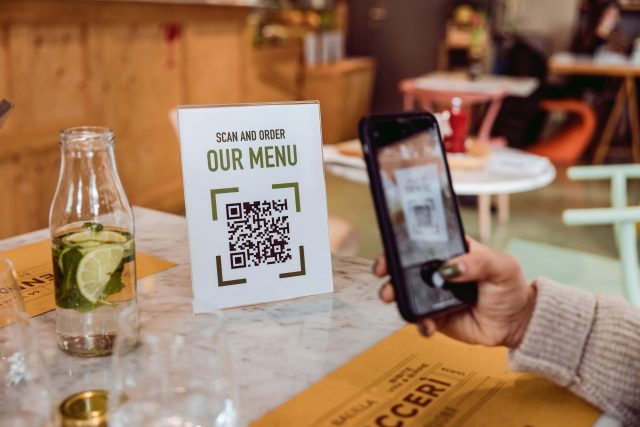This website uses cookies so that we can provide you with the best user experience possible. Cookie information is stored in your browser and performs functions such as recognising you when you return to our website and helping our team to understand which sections of the website you find most interesting and useful.
Could QR codes spell the end of asking for the bill?
Younger diners appear to be shunning traditional table service in favour of ordering and paying at restaurants digitally, according to the latest data from Barclays.

The data reveals that 15% of 18-34-year-olds prefer to order and pay for food and drink by scanning a QR code with their phone. While this percentage is hardly huge, it is indicative of a potentially much greater shift in the future.
“Many of our hospitality & leisure clients are finding success by giving customers the ability to order and pay from their table by scanning a QR code,” explained Karen Johnson, Barclays’ head of retail. “Customers like it because they don’t have to wait for the bill, meaning they can squeeze in an extra round of drinks or a dessert before they need to leave, and the business frees up more capacity for waitstaff, boosting productivity.”
The data from Barclays also revealed that contactless payments continue to be popular in restaurants. Though overall spending in restaurants declined by 6.7%, a consequence of the cost of living crisis causing consumers to have less disposable income, contactless spending in restaurants fell by only 2.9%, suggesting a rise in diners opting for it.
QR codes do present several advantages for operators, particularly given that they negate the need for the pub, bar or restaurant to print menus, which not only means money saved but also means that should prices be increased (as has been the trend in the UK), a new menu does not need to be printed to show the new prices.
This technology isn’t just utilised by casual dining spots either – higher end establishments have also embraced it. Part of the reason why QR codes took off across the sector was the Covid-19 pandemic, with restaurants eager to minimise staff contact with diners in the name of social distancing.
Furthermore, given the crippling staff shortages that countless hospitality businesses across the UK are facing, a consequence of a myriad of factors, perhaps having customers order and settle up themselves, rather than relying on a waiter to bring a menu and bill over, might stop what front of house employees there are from being overstretched.
However, as the Barclays data shows, QR codes are favoured by younger generations. For older people, who are perhaps less smartphone savvy, it might arguably make life more difficult for them, and prevent them from visiting certain restaurants that only permit ordering and paying through a QR code scanned through a mobile. According to U Switch data, 20% of the over-65s do not have a smartphone compared to just 2% of 16-24-year-olds.
Then again, regarding contactless data, the findings show that the generational gap is narrowing, with 80.1% of 85-95-year-olds with a Barclays account using contactless in 2023 – indeed, the over-65s have been the demographic taking up contactless most rapidly for the last three years, with a 4.1% year-on-year increase in users. Perhaps QR codes might see a similar take up, especially as the generations who have grown up in a smartphone-dominated world age get older.
Ordering via a QR code is not without its risks for customers and operators, especially in an age where many people feel compelled to share their restaurant visits on social media. Last year, a Chinese woman ended up with a CN¥430,000 (£50,000) bill from a hot pot restaurant after posting a photo of her meal, and the QR code she had used to order food, on WeChat. The result was that ill-intentioned viewers of her post were able to order huge quantities of food to her table, including 2,580 portions of squid, 9,900 portions of shrimp paste, and 20 bottles of Honghua Lang Baijiu.
It also raises questions about tipping. Younger diners may supposedly be more generous than older ones when it comes to giving a tip at the end of a meal, but QR codes reduce one’s interactions with waiters, therefore arguably reducing the inclination to pay extra money.
Something should also be said regarding the value of interactions with hospitality staff, something that can’t necessarily be done through a QR code. Part of the experience of going to a restaurant is about both the tactility of a menu, and being able to ask questions about the dishes, or the wine list. This writer feels that without that possibility, going out for dinner loses its personal touch. This technology may make things quicker, but does it really make them better? Perhaps the real story isn’t that 15% of 18-34-year-olds prefer to order and pay via a QR code, but that 85% do not.

